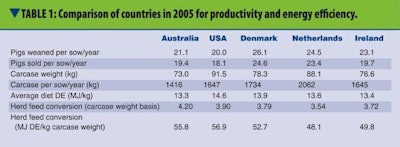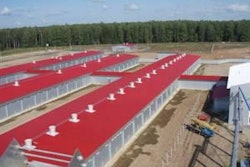
In the last few weeks it has seemed better to purchase feed wheat on a daily basis rather than buy forward, because of the way its price started to fall. But the majority view among attendees at an international meeting in Ireland was that the apparent slight easing of the grain market should fool no-one. The low price levels of recent memory will not return. We are in a new era of higher input costs and this will demand different ways of working.
It could even extend to the use of less-grain feeds, Professor Roger Campbell told the pig seminar hosted by the European arm of Alltech. Professor Campbell, chief executive of the Pork CRC research centre in Australia, declared that taking conventional grains out of the pig's diet was not such an extreme idea under the latest circumstances. Some non-conventional energy sources such as from sugar production stood ready to enter the equation at an appropriate price.
Whatever its origin, he indicated, the dietary energy will have to be used to maximum effect in order to offset price constraints. Feed efficiency is all-important today.
"The new target should be a feed-to-gain ratio of under 2.0 from birth until a weight of 110-115kg," he insisted. "We have been a bit lazy before. The results were not good enough."
He advised measuring the efficiency in terms of megajoules (MJ) of Digestible Energy (DE) per kilogram carcase weight sold. The average DE rating of feeds shown by a 2005 comparison of US, European and Australian industries (see Table 1) was in the range 13-15MJ/kg diet. The herd feed energy efficiency found by their national recording schemes ranged between 48-57MJ/kg carcase weight but Prof. Campbell proposed that the aim should be to achieve 44MJ/kg.
The benefit was illustrated by a US comparison of gilts from 2 genetic lines that were given the same diets in the same facility. The daily weight gain from 20kg to 100kg liveweight averaged 841 grams for one line and 955g for the other. Their feed-to-gain ratios worked out at 2.51 and 2.09 respectively. In terms of dietary energy the reduction was from 37.7MJ DE/kg to just 31.4MJ DE/kg. Feed usage dropped from 201kg to 167kg per pig. Changing to the better line would therefore have saved a 5000-sow herd over 3000 tons of feed per year, a saving in volume of almost 17%.PIGI


.jpg?auto=format%2Ccompress&fit=crop&h=167&q=70&w=250)














